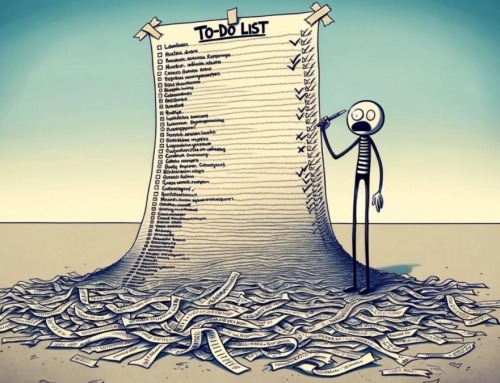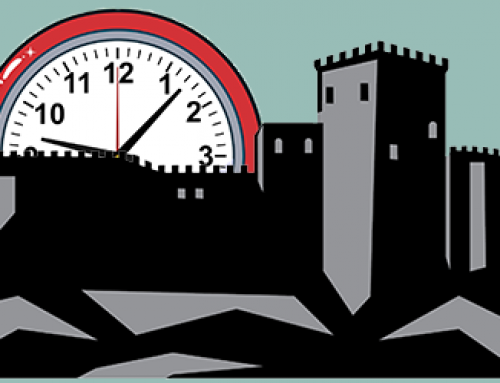In the world of sales, sales team collaboration is often a primary goal, but there can be significant obstacles to this, including a lack of systems and processes to enable it, the workflows and responsibilities of team members, competition between reps, and the geographical separation of employees or virtual teams. These factors and others can make it difficult for your sales team to collaborate for greater efficiency and the benefit of your business.
For example, if team members need to collaborate to serve customers but they’re disorganized or can’t access the information they need, or if members of your sales team are working remotely or are operating within their own silos, this can actually work against your sales efforts and cost your potentially revenue and profits.
The key to avoiding these problems is to cultivate some habits and deploy strategies that will help your sales team collaborate and do so more effectively. Here are three habits that can form the core of your first steps toward greater collaboration.
Start Sharing Information and Workflows
One of the biggest challenges in working together to serve customers is when there is a lack of a centralized and accessible system for storing, sharing, and tracking information about your customers and sales opportunities. If team members are using their own systems for managing customer information and relationships, whether they’re on paper or using electronic documents and spreadsheets, chances are that other sales reps may not have access to these same resources. And when a customer contacts them, they may have a hard time finding the information they need to provide timely, quality customer service. Also, without a good system for CRM, it can be almost impossible to manage workflows, schedule calls and meetings, and make sure that there is prompt follow-up on every opportunity. In some cases, competition can drive some reps to be protective about customer information and workflows, and they are reluctant to share important details or maintain proper records.
Don’t let these issues get in the way of delivering outstanding customer service and growing your business. If you’re not already using a simple, online system for customer relationship management (CRM) or your current system doesn’t provide a centralized point for sharing information, calendars, tasks, notes, and projects across your team, then consider making the switch in the near future.
Make sure that any CRM solution that you use provides a convenient, online repository for all of your customer records and information, making them immediately accessible to whoever should have access, including support for anytime, anywhere access via mobile devices. This should include the ability to save and log virtually anything from your customer interactions and workflows, including emails, notes, and history. Also make sure that your CRM provides a complete system for maintaining and sharing calendars, managing and delegating important tasks, leads, and sales follow-up, and tracking and managing your sales pipeline and all of your critical sales projects. By getting organized and ensuring that sales and customer information can be accessed and shared across your team, you can make huge strides toward greater sales collaboration.
Hold Stand-up Meetings
Sales meetings are a traditional strategy for encouraging collaboration and sharing sales strategies, wins, and best practices. But they can also be counter-productive if you’re spending too much time in meetings or they devolve into nothing but accountability sessions, competitions between your team, or complaint sessions.
If you’re not already doing so, try taking a different approach and, rather than holding weekly meetings or longer sessions, hold stand-up meetings for about 15 minutes each day. Your team will actually gather together informally and stand up for the duration of your meeting, which tends to encourage shorter sessions, eliminate distractions, and allow your team to focus on a few timely, important issues rather than a litany of agenda items.
By meeting more frequently but for shorter period of time, you can identity pressing issues or problems before they have a bigger impact on your business, and you can respect everyone’s time and get your team back to their important sales work. Nonetheless, even in a 15-minute meeting, a lot can be discussed and accomplished, with top priorities being addressed and a greater focus and sense of urgency.
Encourage Sharing of Sales Wins and Best Practices
Sales wins are always a good news story, and your team members should be given a chance to share those wins with the rest of your team and have their accomplishments acknowledged. Ask them to talk about how they managed to close the sale and some of the techniques or strategies that they used. Encourage reps to share these insights to help each other learn best practices and continuously improve their sales skills. And make sure to acknowledge and praise reps who help each other and work collaboratively.
Always cultivate a positive environment in which your sales reps are clearly appreciated and encouraged. Setting the right tone is important because, while sales competition can be healthy and beneficial, it’s important to make it fun rather than something that is aggressive and personal. And don’t let those without a recent win feel discouraged or left out. Make sure that your team understands that it’s all about collaborating, sharing best practices, and success as a team above all else. Take some opportunities to talk about lost deals and what can be learned from them, common objections and ways to overcome them, and the challenges that everyone shares. Through mutual support and sharing of successes, failures, and best practices, your team can develop a collective knowledge base and a cooperative, collaborative approach that will deliver better results across the board.






